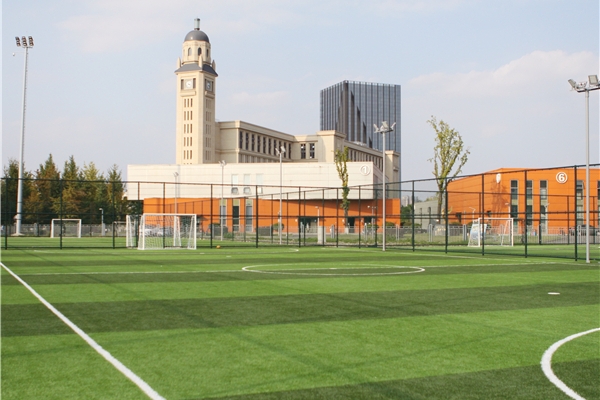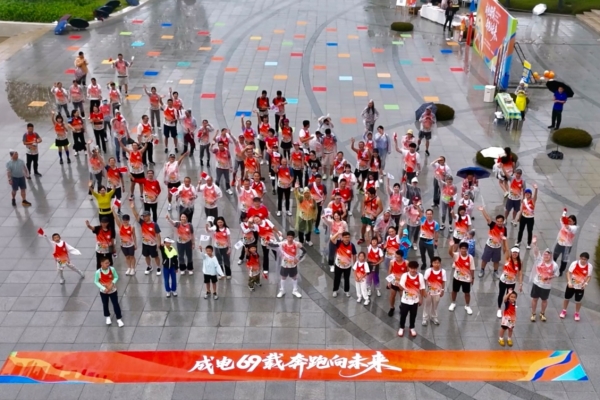即可将网页分享至朋友圈
由电子科学与工程学院主办的“电子论坛”第127期邀请到IEEE Fellow、意大利特伦托大学电磁诊断研究中心主任Prof. Andrea Massa,与我校师生共同探讨智能电磁环境与元宇宙的物理层构建。具体安排如下,欢迎感兴趣的师生参加。
主 题:From the Smart Entities Design to the Smart EM Planning and Optimization — A Journey Towards the Physical Implementation of the Metaverse
主讲人:Prof. Andrea Massa (IEEE Fellow, Director of ELEDIA Research Center, University of Trento, Italy)
时 间:2023年7月5日(周三)10:00-11:00
地 点:清水河校区4号科研楼A座420
内容简介:
"Imagine a virtual world where billions of people live, work, shop, learn and interact with each other, all from the comfort of their couches in the physical world. In this world, the computer screens we use today to connect to a worldwide web of information have become portals to a 3D virtual realm that's palpable, like real life, only bigger and better. Digital facsimiles of ourselves, or avatars, move freely from one experience to another, taking our identities and our money with us." [L. Tucci]
This is known as the metaverse, which does not exist today, but it can be reality in a close future whether the envisaged advances in the technology realm will come true. For instance, the metaverse implementation is strongly related to the ubiquitous availability of considerable computational resources and huge information flows from content generators to users. From the physical-layer viewpoint, it means to have available a wired/wireless infrastructure well beyond the standard one based on the use of base-stations (BTSs) and terminals. As a matter of fact, while higher frequency bands are mandatory for improving the users' experience and QoS, the densification of BTSs is not a suitable solution because of the direct as well as the indirect costs. Moreover, metaverse-enabling wireless architectures should be "smart" and simple. Through an innovative design, wireless networks need to transform from centralized to distributed being simple and integrated instead heavy-duty and incremental, while moving from terrestrial to ubiquitous access.
This is the background picture of the Smart EM Environment (SEME) paradigm for new generation wireless architectures. Moving from a vision of the propagation environment as a "stone guest" in a wireless communication, the SEME approach considers the propagation channel as a key-actor in fitting the technological requirements of a sustainable and reliable implementation of the metaverse. Accordingly, not-only the obstacles and objects are taken into account and opportunistically exploited to improve the QoS and the user-experience (UE), but also they are "improved" by adding smart entities such as smart devices (e.g., EM skins [EMSs], reconfigurable intelligent surfaces [RISs], smart repeaters, and IAB nodes) and smart objects (e.g., WAIM and meta-antennas or artificial scatterers).
This talk will review recent trends and advances in the build in of the SEME towards an effective and out-of-the-labs implementation/deployment of the metaverse.
主讲人简介:

Andrea Massa (IEEE Fellow, IET Fellow, Electromagnetic Academy Fellow): He has been a Full Professor of Electromagnetic Fields @ University of Trento since 2005.
At present, Prof. Massa is the director of the network of federated laboratories "ELEDIA Research Center" located in Brunei, China, Czech, France, Greece, Italy, Japan, Perù, Tunisia with more than 150 researchers. Moreover, he is holder of a Chang-Jiang Visiting Chair Professorship @ UESTC (Chengdu – China), Visiting Research Professor @ University of Illinois at Chicago (Chicago – USA), Visiting Professor @ Tsinghua (Beijing - China), Visiting Professor and IAS Distinguished Scholar @ Tel Aviv University (Tel Aviv – Israel), and Professor @ CentraleSupélec (Paris - France). He has been holder of a Senior DIGITEO Chair at L2S-CentraleSupélec and CEA LIST in Saclay (France), UC3M-Santander Chair of Excellence @ Universidad Carlos III de Madrid (Spain), Adjunct Professor at Penn State University (USA), Guest Professor @ UESTC (China), and Visiting Professor at the Missouri University of Science and Technology (USA), the Nagasaki University (Japan), the University of Paris Sud (France), the Kumamoto University (Japan), and the National University of Singapore (Singapore). He has been appointed IEEE AP-S Distinguished Lecturer (2016-2018) and served as Associate Editor of the "IEEE Transaction on Antennas and Propagation" (2011- 2014).
His research activities are mainly concerned with inverse problems, antenna analysis/synthesis, radar systems and signal processing, cross-layer optimization and planning of wireless/RF systems, system-by-design and material-by-design (metamaterials and reconfigurable-materials), and theory/applications of optimization techniques to engineering problems (coms, medicine, and biology). Prof. Massa published more than 900 scientific publications among which more than 350 on international journals (> 14.700 citations – h-index = 63 [Scopus]; > 12.000 citations – h-index = 58 [ISI-WoS]; > 23.900 citations – h-index = 88 [Google Scholar]) and more than 570 in international conferences where he presented more than 210 invited contributions (> 50 invited keynote speaker) (www.eledia.org/publications). He has organized more than 100 scientific sessions in international conferences and has participated to several technological projects in the national and international framework with both national agencies and companies (18 international prj, > 5 M€; 8 national prj, > 5 M€; 10 local prj, > 2 M€; 63 industrial prj, > 10 M€; 6 university prj, > 300 K€).
电子科学与工程学院
2023年6月26日
编辑:李文云 / 审核:李果 / 发布:陈伟


